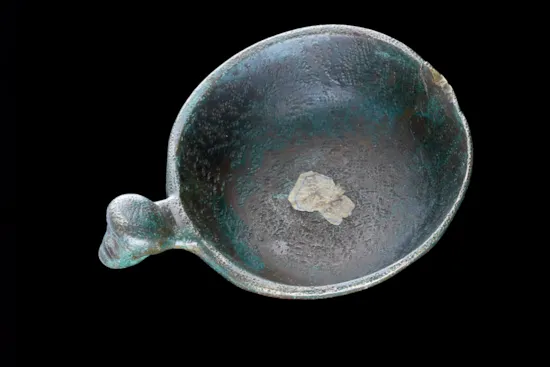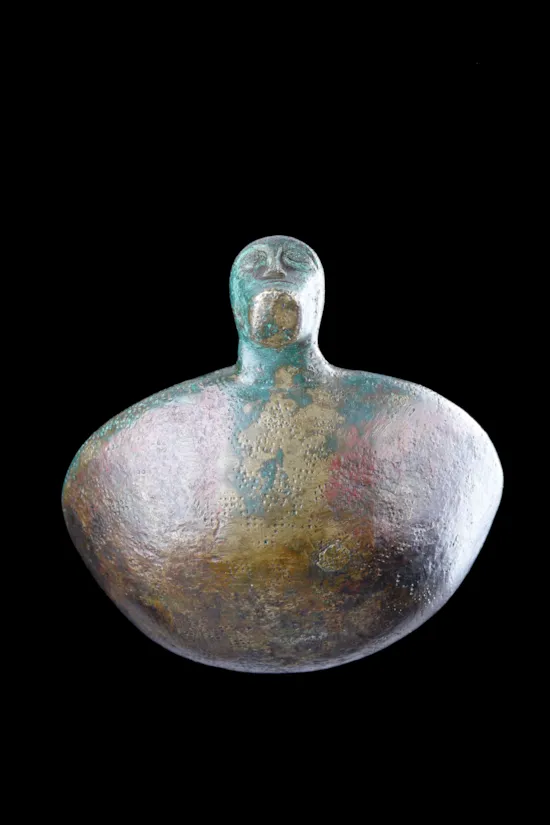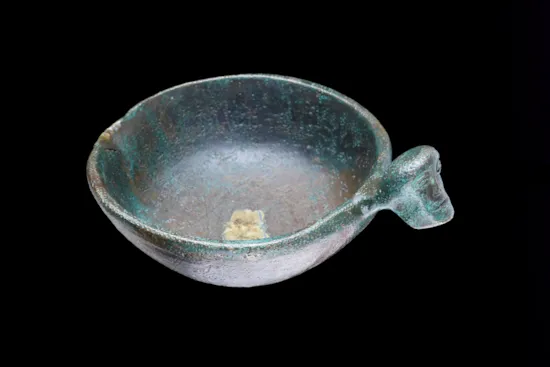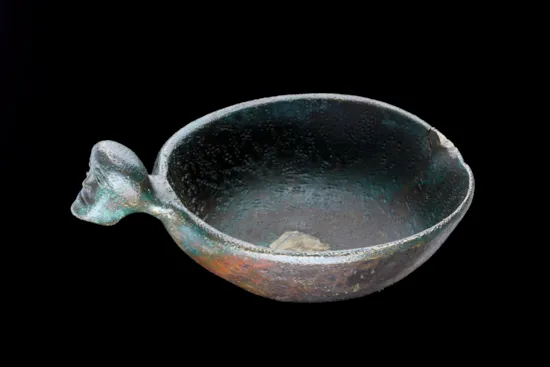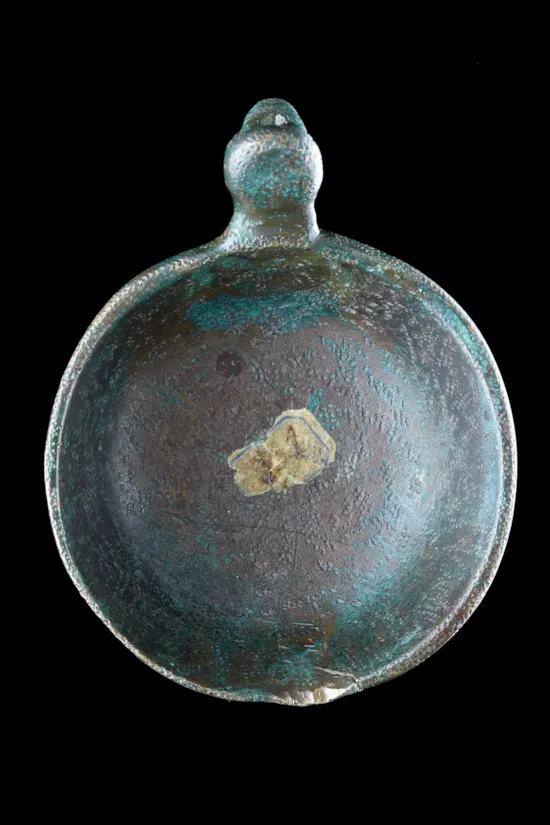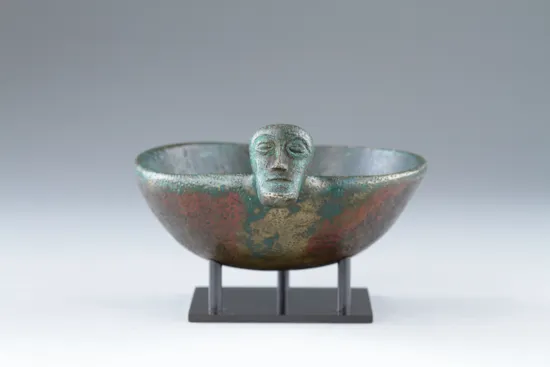Ancient Celtic Iron Age Bronze Cup Cast with the Upraised Head of a Clean Shaven Man
An Ancient Celtic Iron Age Bronze Cup Cast with the Upraised Head of a Clean Shaven Man with ‘Spectacled’ Eyes and Wide Slit Mouth Possibly a Ritual Drinking Vessel
The entire surface decorated with a cross hatching or basketry pattern
An old inventory label to the interior inscribed ‘332’
Smooth aged greenish brown patina
4th – 3rd Century B.C
Size: 5.5cm high, 13.5cm deep 10.5cm dia. - 2¼ ins high, 5¼ ins deep, 4 ins dia / 7.5cm high - 3 ins high (on base)
The entire surface decorated with a cross hatching or basketry pattern
An old inventory label to the interior inscribed ‘332’
Smooth aged greenish brown patina
4th – 3rd Century B.C
Size: 5.5cm high, 13.5cm deep 10.5cm dia. - 2¼ ins high, 5¼ ins deep, 4 ins dia / 7.5cm high - 3 ins high (on base)
An Ancient Celtic Iron Age Bronze Cup Cast with the Upraised Head of a Clean Shaven Man with ‘Spectacled’ Eyes and Wide Slit Mouth Possibly a Ritual Drinking Vessel
The entire surface decorated with a cross hatching or basketry pattern
An old inventory label to the interior inscribed ‘332’
Smooth aged greenish brown patina
4th – 3rd Century B.C
Size: 5.5cm high, 13.5cm deep 10.5cm dia. - 2¼ ins high, 5¼ ins deep, 4 ins dia / 7.5cm high - 3 ins high (on base)
The entire surface decorated with a cross hatching or basketry pattern
An old inventory label to the interior inscribed ‘332’
Smooth aged greenish brown patina
4th – 3rd Century B.C
Size: 5.5cm high, 13.5cm deep 10.5cm dia. - 2¼ ins high, 5¼ ins deep, 4 ins dia / 7.5cm high - 3 ins high (on base)
Much of the Celtic Art that has survived is in the form of specialist bronze and goldsmiths work and the Celtic smiths were held in high regard and achieved considerable status. The head occupied a central role in Celtic iconography and this example resembles those found on anthropoid-hilted short swords from Gaul, Britain and Ireland. One handled cups were used for domestic or ritual purposes and wine was frequently drunk at insular feasts, but the most common intoxicating drink was in fact known as ‘Corma’ in Gaul. Barley was most often used in its manufacture, but rye, oats and wheat were also utilised. The grain was converted into malt, dried in a kiln until it was hard, ground up and made into a mash with water, fermented, boiled and then strained. Ale was often made in private houses for family use, but there were also professional brewers known as ‘cerbsire’. Mead made with honey, the name coming from the goddess ‘Medb’ meaning ‘she who intoxicates’ was also drunk and is perhaps the most characteristic Celtic alcoholic drink. The Celtic capacity for strong liquor became legendary. Diodorus Siculus, the Greek historian, commented on the quantity drunk at meals and the inevitable ensuing violence.
Ex Private French collection Nice
Acquired from Anatole France (1844 - 1924)
Ex Private collection Paris
Acquired from Ratton-Ladrier
Ex Private UK collection
Acquired from Rupert Wace London 2009
Acquired from Anatole France (1844 - 1924)
Ex Private collection Paris
Acquired from Ratton-Ladrier
Ex Private UK collection
Acquired from Rupert Wace London 2009
Ancient Celtic Iron Age Bronze Cup Cast with the Upraised Head of a Clean Shaven Man
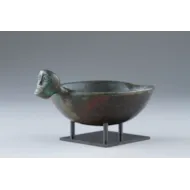
SOLD

